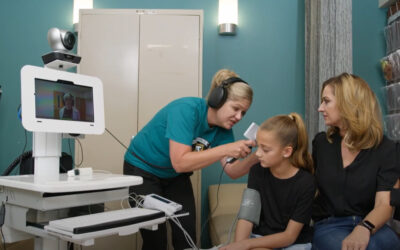This is Part III of a series called “Your Second Look At Telemedicine” in which we uncover the latest trends in the field. To read Parts I or II, please click here.
Long gone are the days of bulky systems and expensive, immobile servers. Instead, modern telemedicine technology is mobile and easy to install or transfer between telemedicine consults. This helps aid in adoption, integration and training, and from there everyday use is more effective than in the past. Here’s a bit more on the evolution of telemedicine systems and why today’s platforms are so powerful:
The death of the ‘telemedicine room’
Even in recent memory, the limited capabilities of telemedicine were, in part, tied to the hardware and technology behind it. Providers could offer telemedicine services, but because of the physical size of the systems themselves, doing so meant visiting a specific location. In some instances, entire rooms had to be set aside for the telemedicine equipment. Partnering clinics and other remote providers also had to work with technology that was often clunky or immobile.
Now that hardware-based video conferencing systems are no longer required for most telemedicine use cases, healthcare professionals have greater flexibility in where and how they provide telemedicine services. Software-based video conferencing can be used on laptops, tablets or smaller, specially made telemedicine units, and requires little more than an internet connection. Even diagnostic medical devices and peripherals are more lightweight and mobile.
Unlocking new treatment opportunities with additional specialties
Telemedicine used to be defined by the individual specialties it served, such as teledermatology, telecardiology, tele-ICU, telestroke and others. Nowadays, however, developers of new cameras, stethoscopes, and other medical equipment are focusing on “telemedicine-ready” devices, so telemedicine is no longer limited to a specialty.
“Telemedicine is no longer limited to a specialty.”
Larger healthcare organizations may be tempted to go for as many devices and equipment as possible, thinking it will give them the ability to address as many specialties as possible. However, accompany clinics and other partners may have thinner margins and limited people-power, so buying fewer but more effective pieces of equipment is a major advantage for any size organization.
Investing in a system that is flexible and doesn’t require many add-ons means that many types of services can be offered at a lower cost. Not only is the provider spending less on equipment, but there are fewer disruptions to daily workflows that detract from the mission of treating patients.
Today, there are devices made to capture and share almost any type of medical data now matter what the specialty is and these can easily be integrated with a telemedicine system. All told, this evolution is helping make telemedicine a more ubiquitous tool when it comes to keeping patients healthy and providing reliable, accessible care.
Across many types of specialty care, telemedicine can be used to make services more dynamic and accessible. Static displays on a stationary monitor have been replaced with cutting edge streaming video that comes with the latest tools for effectively keeping patients healthy. And because these solutions offer flexibility for providers, sub-divisions and specialties can be better integrated into a broader continuum of “telecare.”




